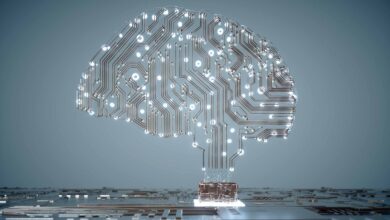The Role of Artificial Intelligence (AI) in shaping the Automotive Aftermarket

By Mr. Anand Kumar
The automotive aftermarket industry is in resurgence after the pandemic, and now thriving. The Automotive Component Manufacturers Association of India (ACMA) recently reported that in FY 2022-23, it registered its highest-ever turnover of ₹ 85,333 crore (USD 10.6 billion), signifying a growth of 15% as compared to ₹ 74,203 crore (USD 10.0 billion) in FY22, This is attributed to unleashing of restrained vehicle demand which has boosted sales, easing of supply shortages, and sales mixes favoring larger vehicles. Furthermore, in India, mounting desire for group mobility and sales of used cars in India are fueling growth by raising the demand for replacement parts, repairs, and maintenance services, It has compelled the industry to explore cutting-edge growth strategies, using digitization and modern AI technologies like Industry 4.0, IOT, Machine Learning, Big Data, and Data Analytics.
It is anticipated that Artificial Intelligence will be especially instrumental in the paradigm move towards digitalization and consumer interests through the implementation of personalization, automation, connectivity, and electrification (PACE) in the automotive aftermarket in India. Innovative driving assistant systems leverage AI-based technology such as automatic parking and speed or cruise control systems. On highways, adaptive cruise control helps drivers to maintain visibility on their speed and that of other vehicles. Advanced cruise and parking control allows autonomous management of the vehicle’s acceleration, stopping and parking contingent on the detection of other objects in the immediate vicinity.
In the automotive sector, OEMs, Tier 1, and Tier 2 manufacturers are now inspired to integrate digital tools like Data Management Systems (DMS) and AI/ML technologies to extract actionable insights from transaction data, and revolutionize their approach to customer satisfaction beyond car component creation. Thanks to AI’s updated ability to predict issues swiftly and precisely, the industry can maintain appropriate accessory inventories, reduce shortages, and cut overproduction losses. A prime example is cognitive predictive maintenance, where technicians deploy sensors and OBD (On-Board Diagnostics) to assess vehicle health in real-time. By detecting operational flaws early, potentially catastrophic failures are prevented.
The distribution channel of the industry also reveals AI’s omniscience in shaping market dynamics. Consumers are no longer dependent upon traditional supply chain and middlemen. Today, they can directly purchase vehicle components from online platforms, signifying the dramatic post pandemic move to online shopping, from a product-centered business model to a more consumer-centric one. Retailers digitize their inventories & sales transactions using AI-enabled algorithms to provide relevant information and suggestions to their customers. Therefore, consumers can make quicker, more informed decisions, while service providers realize increased cross-selling and upselling opportunities.
By emphasizing service quality, the advent of AI has prompted auto component manufacturers to rethink their distribution channels in order to keep up with the changing digital landscape, where brand awareness will be critical to upselling their products. Such formidable combinations of data digitization, AI, and ML mark a paradigm shift, enhancing efficiency and customer service in the automotive aftermarket realm. Driven by mutable consumer expectations and priorities AI will alter the operative strategies of the aftermarket industry, while personalization, automation, connectivity and electrification (PACE) will gain more eminence in coming years.
(The author is Mr. Anand Kumar, Head of Product & Strategy, Aftermarket Domain, Uno Minda Ltd., and the views expressed in this article are his own)



